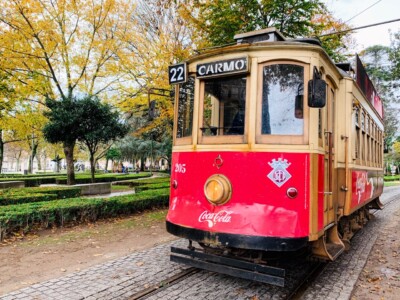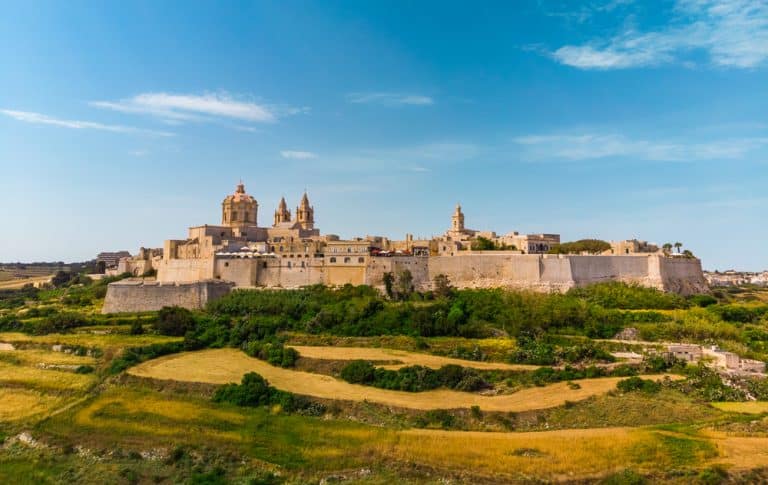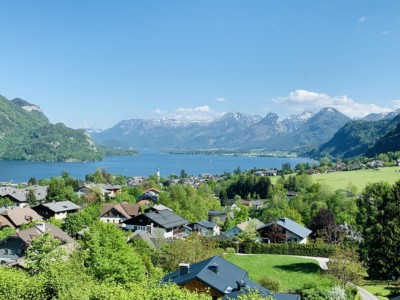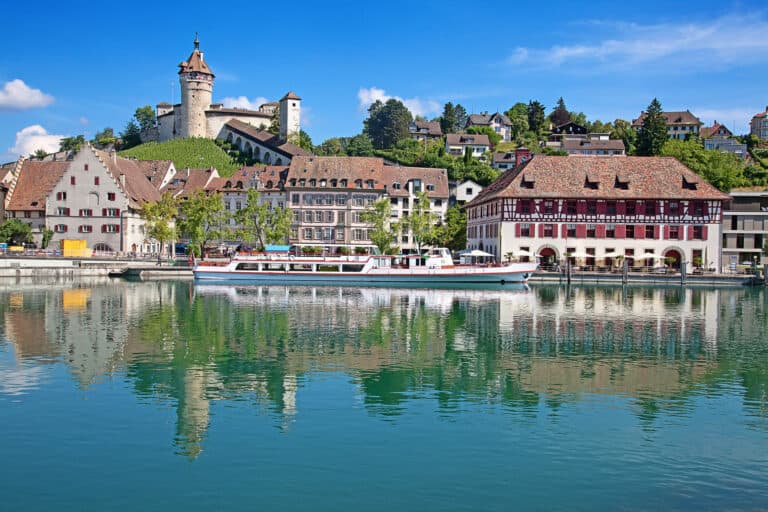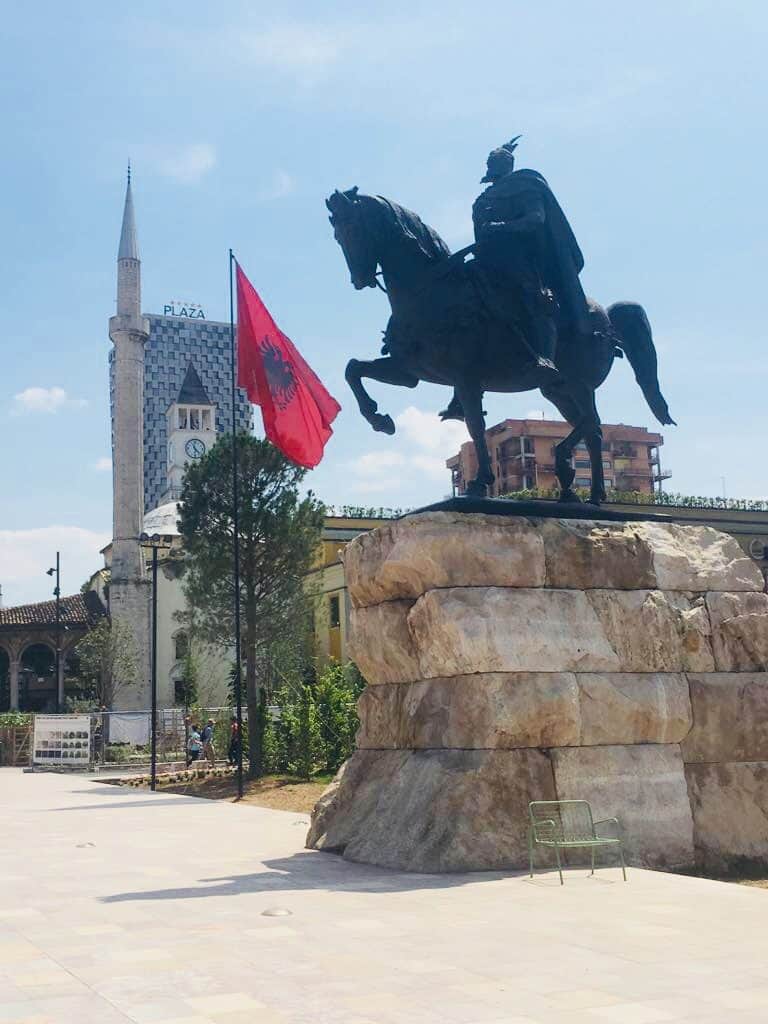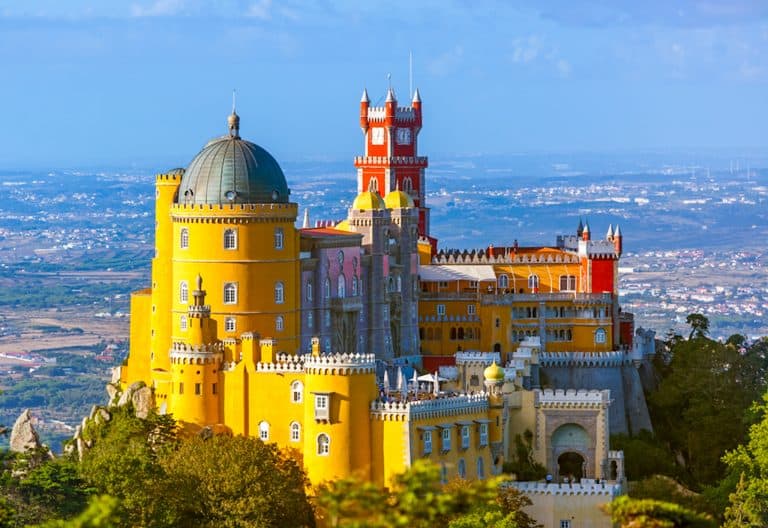Malta: 20 top things to do in Valletta
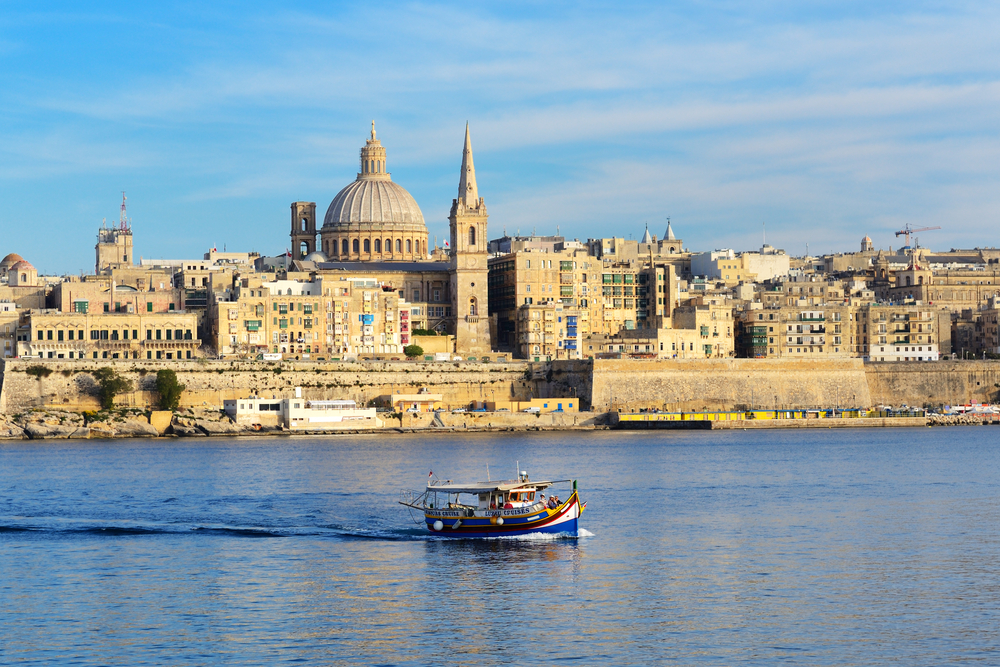
The island of Malta is a great destination for tourists of all types. Valletta, the capital of Malta, has a lot to offer to everyone and is an excellent location for a short stay, as I recently discovered on a three-night break here.
There are lots of things to do in Valletta. The city is full of history and culture with its many museums and churches, and beautiful architecture. So much so that it is a designated UNESCO World Heritage Site.
However, there are also more contemporary things to see (many a result of the city’s status as European Capital of Culture in 2018) and an array of great restaurants and bars. All of which makes Valletta the perfect city break.
The island’s diminutive size (it covers only 121 square miles and is the 5th smallest country in Europe) means it’s also easy to take a day trip out from the capital.
Malta has many beaches, and there is the opportunity to hop across to two other islands. So visit for a weekend or for three weeks, and you won’t be short of things to see and do.
This post contains affiliate links
Read on for my suggestions for the top things to do in Valletta (there’s at least 20!) and for some practical information to help you plan your trip.
And for those of you on a fleeting visit to the city, I have also have a 2 day itinerary that you can access here, complete with my 7 top tips for a visit to Valletta.
Where is Valletta?
Valletta is the capital of Malta, one of three Maltese islands in the mediterranean sea near to the Italian island of Sicily. It sits east of Tunisia and north of Libya in Africa.
Malta is the largest island, with its smaller neighbours being Gozo and Comino.
Valletta itself is situated on the east coast of Malta.
The history of Valletta
Valletta was established a year after the Great Siege of Malta in 1565, during which the Knights of St. John (also known as the Knights Hospitaller), a Catholic military order, successfully defended the island against an Ottoman attack. The city was named after the Grand Master of the Order, Jean Parisot de la Valette.
The French briefly occupied the island in the very late 18th century before it became a British Crown colony in 1813.
Malta then served as a British naval station throughout World War II, and the island was heavily bombed by the Germans. In 1942, King George VI granted Malta the George Cross in recognition of their experiences and suffering during this period.
The island gained independence in 1964, and 10 years later became a republic.
You can see the influence of the different periods of its history as you wander through the city.
You can also learn more on a walking tour of the city centre, which I would highly recommend.
Why visit Malta
There are a wealth of reasons to visit Malta. The weather, the architecture, the beaches, the cuisine, and the history, to name but a few.
The capital, Valletta, also makes for a great little city break. It is tiny enough that you can see the main attractions even if you have only one or two days.
Below are some of the top things to do in Valletta.
Things to do in Valletta
See stunning views from The Upper Barrakka Gardens
The Upper Barrakka Gardens are situated only a couple of minutes’ walk from the centre of Valletta.
The gardens have small patios and fountains and is a pleasant place to visit. Musicians are often playing, and there is a small outdoor cafe where you can sit and relax. There is also a statue of Winston Churchill here.
However, the main draw is undoubtedly the views you get when you walk through the gardens and beneath the arches at the far end.
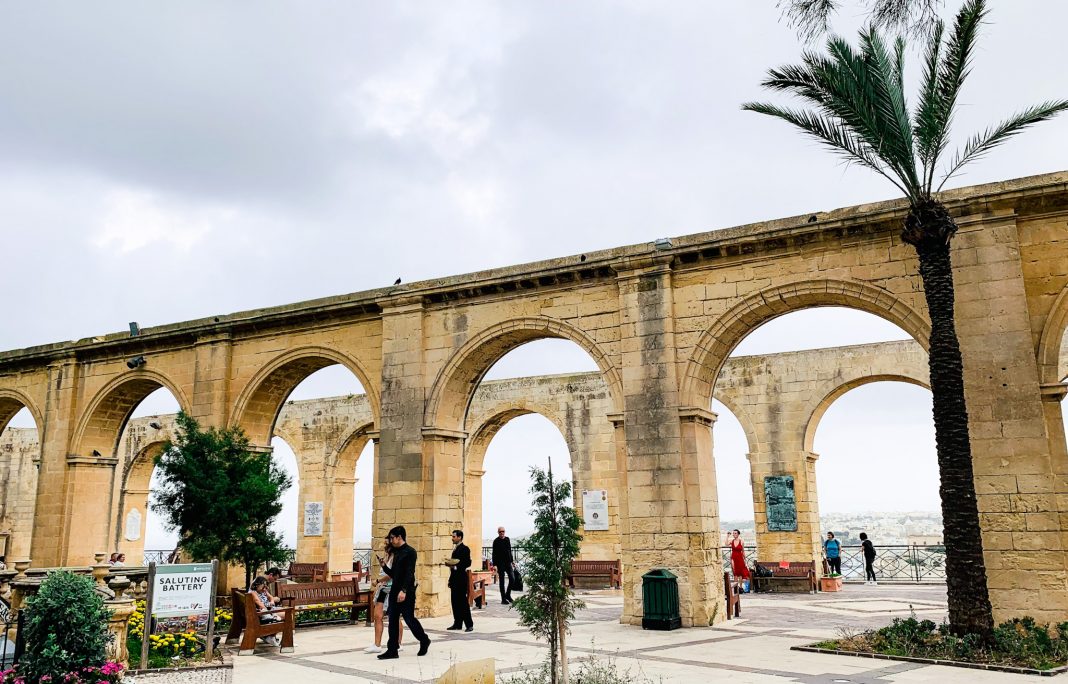
From here, you get to see spectacular views out across the Grand Harbour and over to the ‘Three Cities’ (if you want to visit the ‘Three Cities’, then there is the Upper Barrakka lift in the gardens that will take you down to the ferry port – see below for more information).

I visited twice during my visit just to savour this view for a second time. This, for me, was one of the best things to do in Valletta and one of the best places to look out across the harbour.
At noon every day, a gun is fired at the Saluting Battery in the gardens. This is a re-enactment of the guns that were once fired daily as way of indicating the time for sailing vessels.
Sail over to the ‘Three Cities’
The ‘Three Cities’ are the fortified towns that you can see across the other side of the Grand Harbour when you look down on this from the Upper Barrakka Gardens.
The cities are Birgu (otherwise known as Vittoriosa), Senglea, and Cosipcua. Birgu is the most important and oldest, and served as the island’s administrative centre until Valletta was built.
A trip over to the cities is a must. You can catch the public ferry (which runs every half an hour) or hire one of the private boats from the port.
If you’re in the city centre, head to the Upper Barrakka Gardens and take the €1 trip in the Barrakka lift down to the ferry port (cross the road and turn left to find the docking station).
The trip by boat takes around 20 minutes and costs €2.80 return (dates as of late 2021). It allows you to admire the Grand Harbour and get great views of the fort at the tip of Birgu city. You also cruise through the harbour past medieval structures that line the water (alternatively you could book a harbour tour).
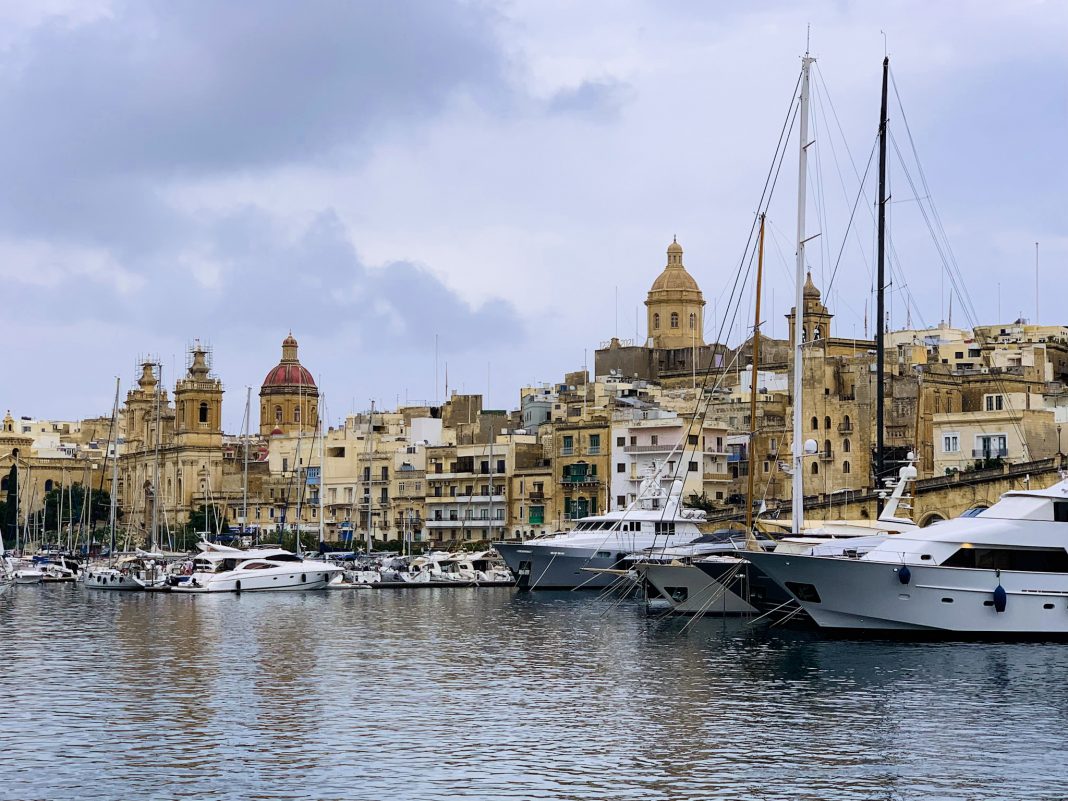
Once there, there are several things you can explore around the small medieval streets, including the Inquisitor’s Palace, the Church of St. Lawrence, and the Auberge D’Angleterre.
You can also walk up to Fort St. Angelo and visit the Malta Maritime Museum.
Marvel at St John’s Co-Cathedral and the Caravaggio paintings
St John’s Co-Cathedral is one of Malta’s most iconic buildings and one of its best known landmarks. It was built in the 16th century between 1573 and 1577. The cathedral is baroque in style and features many things, including its magnificent interior.
Unusually, for a cathedral, you need to pay to enter. However, it is definitely worth doing this just to see its exquisite interior. In my opinion, a visit to this cathedral is one of the top things to do in Valletta.
In contrast to its unassuming appearance from the outside, the interior is bright and opulent. There are chapels and alcoves along the sides, all adorned and embellished with paintings, frescos, sculptures, and carvings.
Decorative tombstones cover the marble floor, and the ceilings are beautiful. The nave is apparently 53 metres long and 15 metres wide.


It is utterly stunning; my photos here don’t do it justice.
The entrance fee also includes an audio guide that explains the design, architecture and history of different parts of the cathedral. There’s lots to learn here, so I’d advise you not to skip this part.
The Caravaggio paintings
The opportunity to view two Caravaggio paintings also justifies the expense of visiting the cathedral if you are an art enthusiast.
The ‘Beheading of St. John the Baptist’ is on display in a spectacular gallery at the conclusion of your tour. It was commissioned in 1608 by one of Malta’s Grand Masters and is renowned for being the only work signed by Caravaggio.
Even if you are not an art expert, it’s something you should not miss. It is a wonderful painting and a highlight of a visit to Malta. You can see the second of the artist’s paintings, ‘St Jerome Writing’ in a separate room.
St John’s Co-Cathedral is open from 9 am – 16.45 pm during the week and then from 9.30 am until 12.45 pm on a Saturday. It is closed on a Sunday. Entrance fees are €15 for adults (it is free for children under the age of 12 years).
See some of the history of the island by the Grand Master’s Palace
The Grandmaster’s Palace
The Grandmaster’s Palace in St. George’s Square is the official residence of the President of Malta. It was also once the home to the Grand Master, the head of the Knights of Malta. As such, it was one of the first buildings erected in Valletta.

The Palace is home to a number of things. This includes the Ambassador’s Room, a place for the Grand Masters to meet visitors, the Tapestry Chamber, used for business, and the State Dining Room.
The rooms are opulent and extravagantly adorned with friezes, tapestries and statues. Even the corridors are amazing: the Corridor of the Knights has marble floors and is lined with paintings and suits of armour.
Entrance to the palace also gives you access to the Palace Armoury. Here there is a collection of weaponry that was used to defend the island during the Great Siege.
Note that the state rooms in the Grand Masters Palace are currently closed. The Palace Armoury is still open however, and costs €6 for adults.
The War letters
A short walk from the palace are wall plaques that reproduce letters that were sent to the Maltese people during the Second World War.
The first was sent from King George VI in April 1942 to the Governor of Malta expressing his gratitude to the Maltese people for their bravery during the war and awarding them the George Cross: “to bear witness to a heroism and devotion that will long be famous in history”.
There is a second plaque here: a letter from the American President Franklin D. Roosevelt in 1943 for “valorous service far above and beyond the call of duty”.


If Malta’s war history is something that particularly interests you, then you can book a walking tour to learn more.
Visit Fort St. Elmo and the National War Museum
Fort St. Elmo is at the end of the peninsula in Valletta, and was used to defend the city against invasion.
It is now mostly used for display purposes, although it maintains historical significance for tourists visiting Malta. It is also another place to capture spectacular views of the harbour and adjacent sites.
You can visit the National War Museum within the fort. It displays a range of military artefacts, including President Roosevelt’s jeep ‘Husky’.
Perhaps most notably, however, it houses the George Cross, which was awarded to the island during the Second World War.
Entrance to the museum is €10 for adults.
For more war history, also consider stopping off at the the Lascaris War Rooms which bills itself as “Malta’s best-kept WW2 Secret”.
Here there is a network of underground rooms and tunnels that once served as the headquarters for island’s war defence effort. You can also see an exhibition of military vehicles here. The museum is not far from the Upper Barrakka Gardens.
See the Great Siege Bell from The Lower Barrakka Gardens
The Lower Barrakka Gardens is another public garden that is situated on a lower level from the upper gardens. It’s a small, neat garden, with fountains, sculptures and an array of other attractions. It seems to get less crowded than other gardens in the city, and so is a peaceful place to spend some time.

As you walk through the gardens you can take in views of Valletta bay from different angles. You can also see the Great Siege Bell memorial that was erected in the early 1990s to honour those who lost their lives during the war between 1940 and 1943.

Wander around Valletta
In addition to the sights in Valletta already flagged in this post, a wander around the city will allow you to see other things and to get a feel for the charm of the place.
There are a number of walking tours you can book that will take you past some lovely architecture, including some beautiful Italian baroque buildings. You can also see the influence of the British when you wander past a red phone box!
Squares and cafes
There are pretty squares to sit in and cafes and restaurants with outdoor terraces. These are perfect for taking the weight off your feet and watching the world go by.

One such place for me was the terrace of Caffe Cordina on Republic Street. This cafe serves some delicious cakes and pastries and you can try out the traditional pastizzi.
These were described in my guidebook as ‘mini pastries’, but there was nothing mini about the one I was served! They have both meat and vegetarian options available.
The City Gate and Parliament House
You can wander up to the city gate and the Parliament building that is located nearby. These are more modern structures that were designed and constructed as part of the city’s preparations for becoming European City of Culture in 2018. The Triton Fountain is nearby just outside the City Gate.
They were designed by Renzo Piano, and according to a local I spoke to, the modernity of the designs were controversial.

I personally thought they were attractive designs that create a relaxing area to start your time in the city. And if you look out of the city gates, you can see a beautiful ornate fountain flowing.
The Pjazza Teatru Rjalto
Equally controversial is the Pjazza Teatru Rjalto – the new Royal Opera House – to the side of the Parliament House.
The original structure had a neo-baroque style but twice suffered damage: the first by fire just a few years after its opening and the second due to bombing during the Second World War.
It remained derelict until the designer Renzo Piano undertook work on it, developing the structure as an open-air theatre.
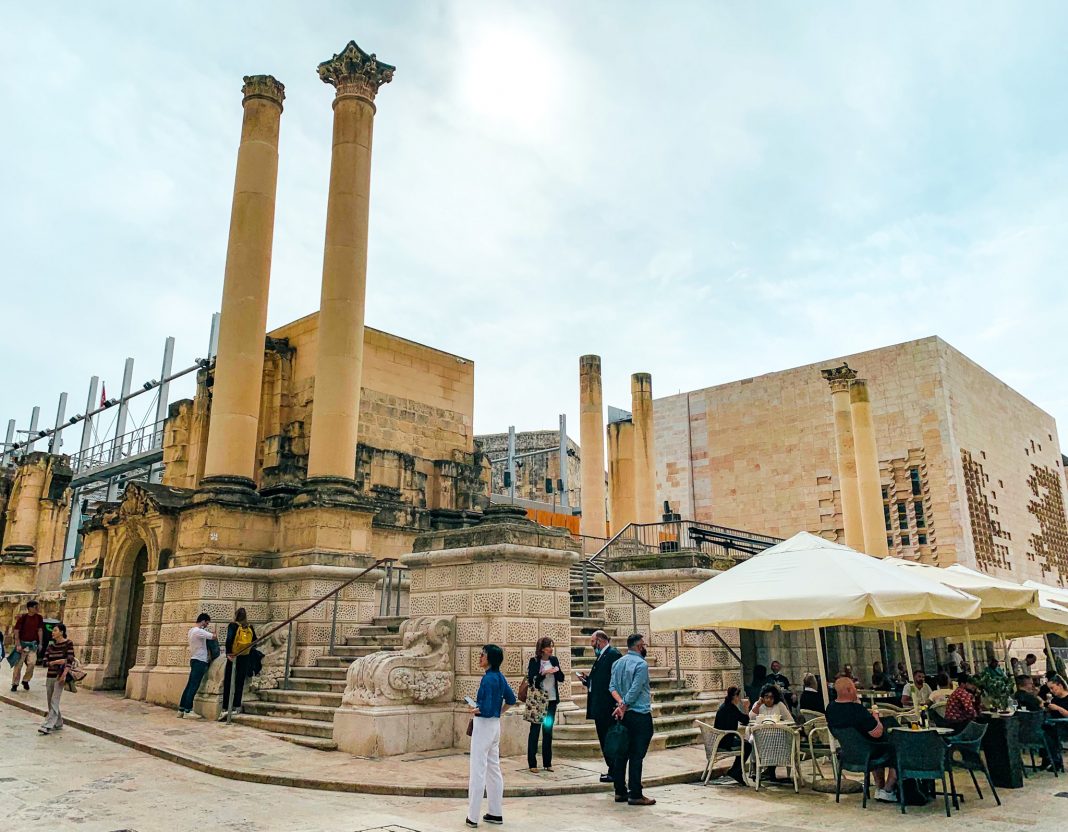
Nearby is the Auberge de Castille which is now used for the Maltese Prime Minister.

Churches
One of Malta’s most striking features is the number of churches it has within such a small area. There are 28 churches in Valletta, an area which covers less than 0.25 square miles.
These include St. John’s Co-Cathedral, the Church of St. Paul’s Shipwreck and the Our Lady of Victories Church.
The latter was the first church in Valletta and where the foundation stone for the city was laid by Grand Master Jean Parisot de la Valette. Opposite the church is a statue of the Grand Master.
There is also the Basilica of Our Lady of Mount Carmel. The dome of the church can be seen from the city’s harbour.
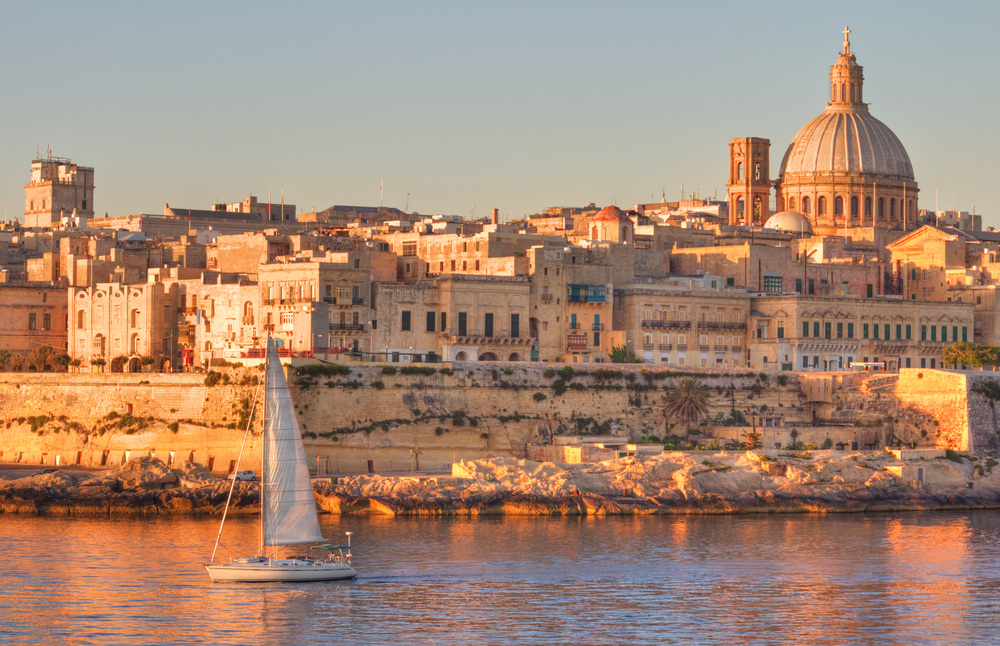
Explore some of the city’s museums
Other museums to explore in Valletta – in addition to those mentioned above – include:
The Casa Rocca Piccola: This is a 16th-century house that’s now open as a museum. It is located near to the Grand Masters Palace and offers a glimpse into the life of an aristocratic family during Maltese rule.
The museum houses art work, furniture, ceramics, and other artefacts from the site’s history. There is also a Second World War air-raid shelter on display. It is open daily except Sunday and costs €9 to visit.
The National Museum of Archaeology: This is another place to learn more about Malta’s heritage. You’ll be able to explore things dating back to 5000 BC, view relics from the Iron Age and Bronze Age, and understand how things have evolved over time.
The museum is open every day from 10 am until 4.30 pm. Entrance is €5 for adults.
MUZA (the Malta National Community Art Museum): This fine arts museum exhibits works by Maltese, as well as international artists. Over 20,000 works of arts are housed here covering the decades from the 15th century to the 20th century. The museum is open every day and it costs €7 euros to visit.
Day trips from Valletta
Island hop to Gozo and Comino
Gozo, the next largest of island after Malta, is known for its stunning scenery, relaxed atmosphere, and tasty food. There are plenty of things to do in Gozo, from hiking, swimming, or taking a boat trip, to visiting ancient temples and churches.
The coastline has some beautiful bays. These include Dwerjra Bay which is a good place for swimming.
Comino is the smallest of the islands. It is is also known for its crystal-clear waters, secluded coves, and stunning craggy cliffs. This includes the Blue Lagoon with its sheltered waters.
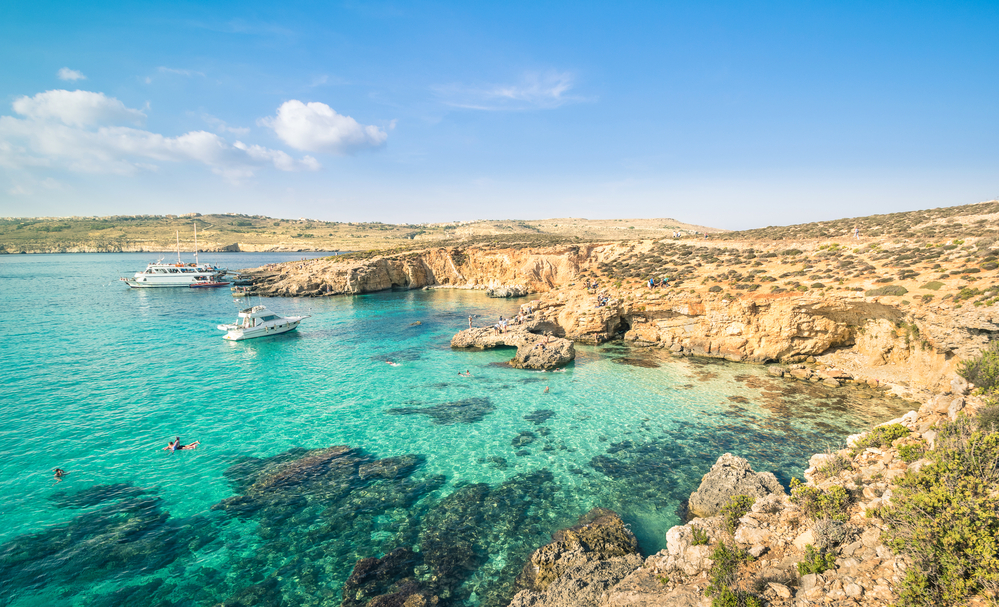
The island is a place to visit for its natural beauty: there are no shops here!
If you’re on a short trip to Malta or Valletta, you can also book a guided tour to explore the islands. This can be the best way to see a lot in a short space of time.
Mdina
Mdina is the oldest city in Malta. Prior to the construction of the city of Valletta, it was Malta’s capital city, its walls and position on a hill providing protection for the local people.
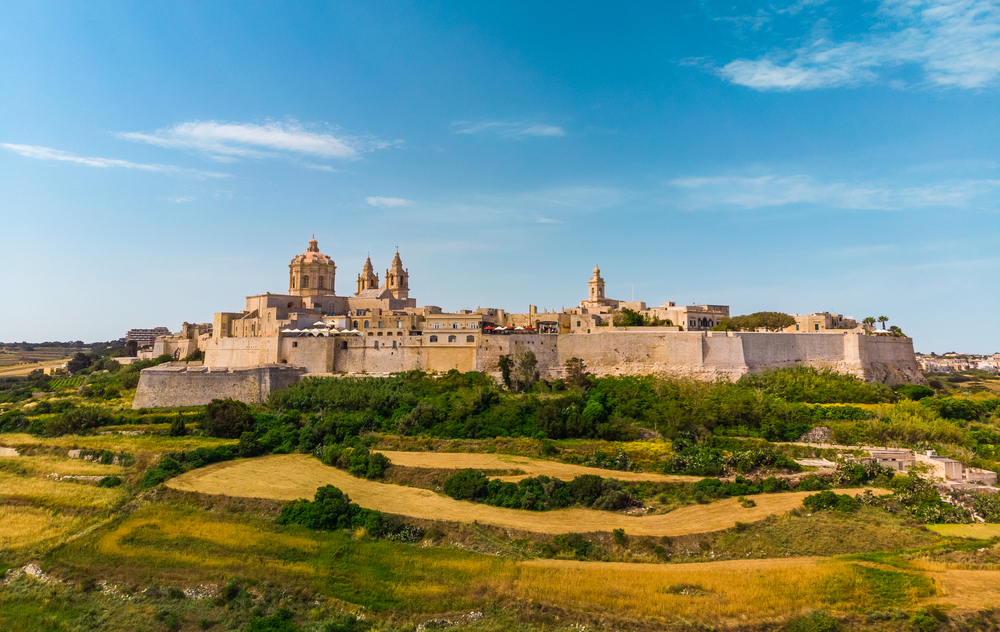
It’s now referred to as the “Silent City” because the shift of the capital to Valletta left it virtually deserted (there are now only a few hundred people that live here). Cars are also not permitted to enter, except for those owned by residents.
The peace and tranquillity of Mdina, coupled with its medieval city gates and city walls, narrow streets and small squares, makes it a must for any visitor to the island. It’s also a great place to visit if you want to get away from it all.
There is a cathedral here, with an art museum nearby, the Palazzo Falson house where a 19th/ 20th century philanthropist lived, and the Magisterial Palace of Justice with its National Museum of Natural History.
Even if you don’t have time to visit any museums or attractions, it’s worth a visit just to see Mdina and experience the silence. If nothing else, you’ll come away with some picture-perfect images of the place.

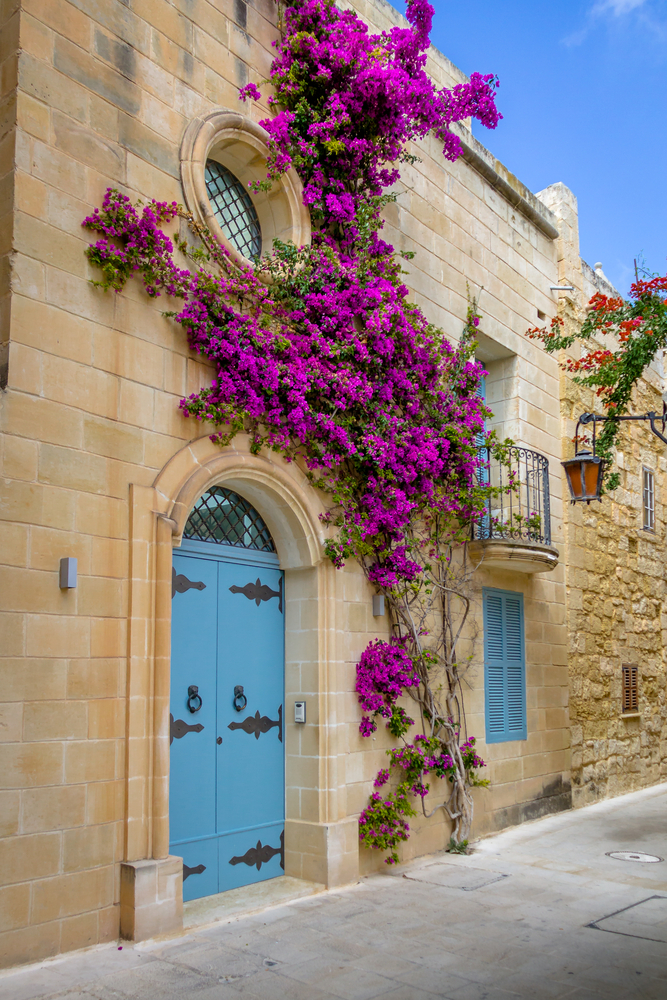
The fortified city of Mdina is around an hour from Valletta. You can take public transport to get here or use the Malta hop-on/ hop-off bus.
You can also book a tour that will take you to Mdina which will provide more information on its history.
Marsoxlokk
If you have time, you might want to consider a trip out to the charming little town of Marsaxlokk towards the south of the island. There is a small harbour, and at one end of this you can find the beautiful Church of Our Lady of Pompeii.

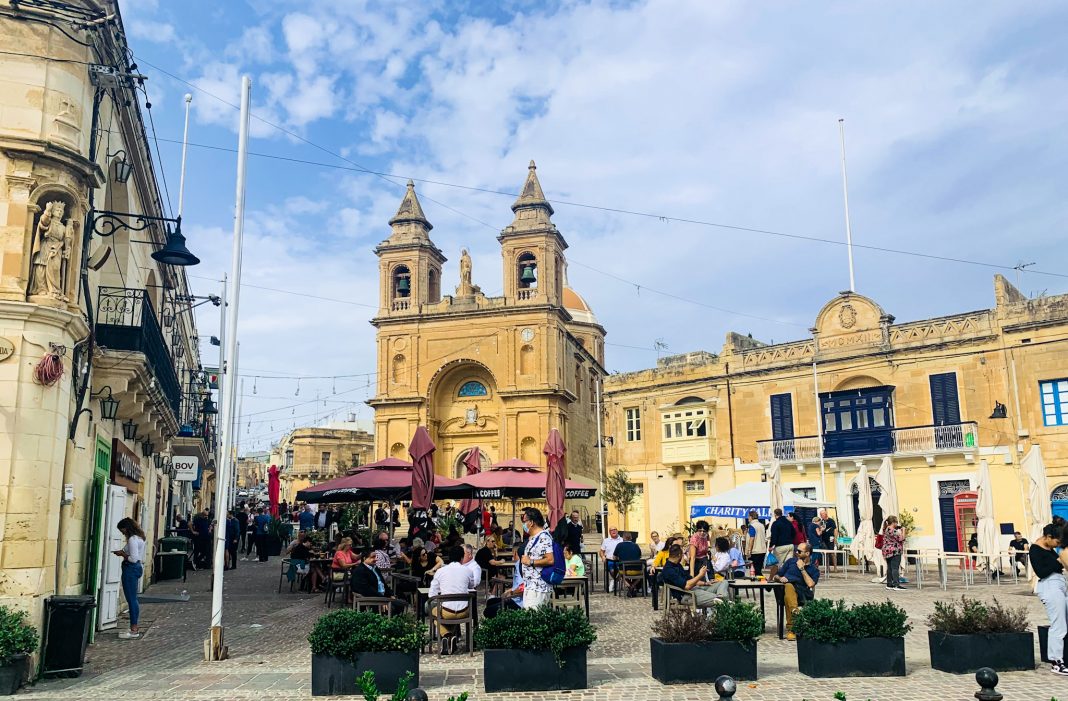
You can take some great photos on a trip here. Pick your spot carefully and you’ll get a wonderful image of the small colourful boats bobbing up and down on the water in the harbour with the church in the background.
To be honest, there’s not a great deal to do in the town other than wandering around soaking up the atmosphere and admiring the scenery. You really only need a couple of hours here in my opinion.
However, on a Sunday there’s a bustling market alongside the harbour selling an array of products, including fresh fish. This might explain why all the restaurants were jammed full of people eating the most amazing fish and seafood dishes.
So if you’re a foodie, head to Marsaxloxx on a Sunday morning, spend a bit of time exploring, and then treat yourself to a delicious fish lunch.
The bus journey from Valletta bus station takes around 35-40 minutes.
The Popeye Village
The Popeye Village bills itself as for “the young and for the young at heart”. It started as a film set in the 1980s and has now been converted into an entertainment attraction.
The park is located around a bay and has enough activities to keep you occupied for the whole day.
The summer offer includes access to a splash pool, mini-golf, large slides, the use of sunbeds, and much more. A cinema, Comic Museum, and treasure hunt are also available. On arrival, you’re met by Popeye and there’s free popcorn!
In the winter, the seaside type activities make way for a Santa Toy Town.
It takes around an hour by bus or car from Valletta to the Popeye Village.
Free things to do in Valletta
It’s often asked: what can I do in Valletta that’s free? While there are several places and sights that do have an entrance fee, there are plenty of things to do in Valletta that won’t cost you the earth.
Both the Barrakka Gardens are free to enter and you will get to see and experience the views that make Valletta such a wonderful place. You can also go into many of the churches for free and learn more about the island’s religious history.
A city centre walk is a pleasant way to see the main sights: you can see the modern architecture of the new city gate and Parliament House, see how the opera house has been renovated and take a look at the war letters on the wall near to the Grand Master’s Palace. There are also some beautiful buildings to gaze up at.
Although not free, a trip over to the ‘Three Cities’ is cheap and good value for money in my opinion. It costs €1 to take to the Barrakka lift down to the ferry port and then costs €2.80 return to take the boat across the Grand Harbour.
Once over the water, there are some delightful medieval streets to wander around in Birgu.
Things to do in Valletta in a day
If you’re visiting other resorts in Malta, so only have limited time for sightseeing in the capital, you have a wide choice of things to do in Valletta in a day.
What you choose will depend on your interests. If you’re an art lover, you’re going to want to spend at least a couple of hours in St. John’s Co-Cathedral and the chance to see the amazing Caravaggio paintings.
If on the other hand, you’re a history buff, then I’d suggest booking a walking tour that will take you to the key sights and historical monuments, while also giving you a flavour of the history of the city over the centuries.
Alternatively, you could explore the city independently and at leisure, stopping in the cafes and restaurants (there’s a nice outdoor cafe in the Upper Barrakka Gardens), taking in the best views of the harbour and popping across to the ‘Three Cities’.
How to get to Malta
You can fly directly to Malta from several London airports, including Heathrow, Gatwick, and Luton. The flight time is just over 3 hours.
Valletta Luqa International airport is less than 9 km from the city and only 15 minutes in a taxi. The X4 bus also runs with a journey time of around 35 minutes.
The best time of the year to visit Malta
Malta has a Mediterranean climate. This means the summer months tend to be hot and dry, with milder – but wetter – winter months.
The temperatures range from an average of around 13 degrees Celsius in January and February (55 degrees Fahrenheit) to the high 20s Celsius (around 80 degrees Fahrenheit) in July and August.
At its height, the temperatures climb above 30 degrees Celsius, so it’s a good idea to pack sunscreen and sun hats if you’re visiting at this time of the year.
I visited in November and, other than a couple of hours of wet weather, experienced bright warm and sunny days. The weather was certainly no barrier to sightseeing or long lazy lunches outside.
There are several events and festivals in Malta that may interest you. In addition to several religious festivals, there is the Malta International Fireworks Festival, an event in April to mark the country’s entry into the European Union.
The island also hosts the Malta International Arts Festival and the Malta Jazz Festival.
You can read more about these events here.
I hope the above has given you some ideas for things to do in Valletta and that you enjoy your trip if you visit Valletta.
You can also access my two day itinerary for a short break in Valletta here:
Other ideas for short European breaks
If you’re interested in short breaks and day trips in Europe and the UK, you may be interested in other recent posts I have published:
For more ideas for short breaks and day trips, visit my website.

